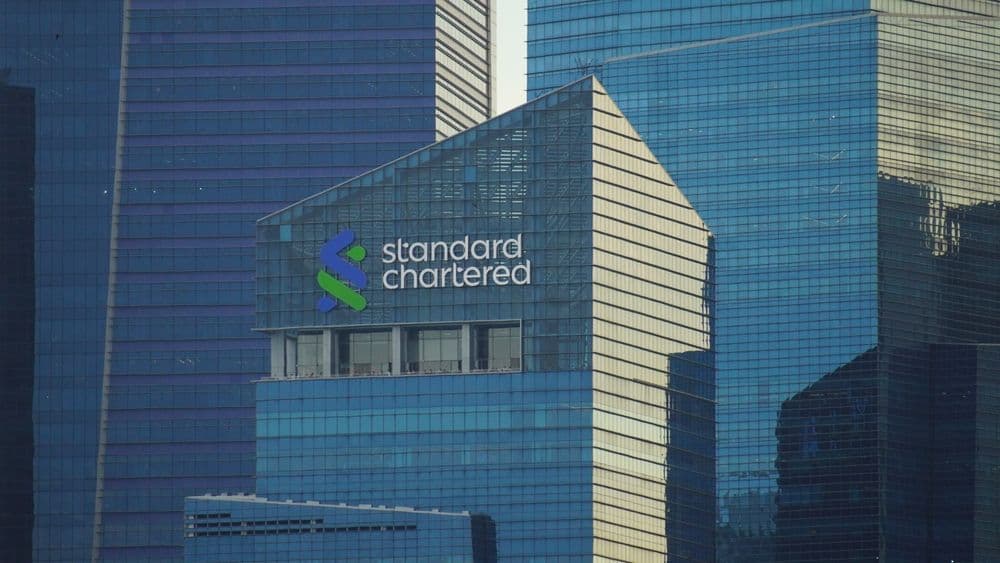South Africa's central bank has validated Standard Chartered's stark warning that stablecoins pose a systemic threat to emerging-market banking systems, as dollar-pegged digital tokens increasingly replace traditional deposits in economies struggling with currency volatility.
The South African Reserve Bank flagged cryptocurrency and stablecoin adoption as a new financial stability risk in its biannual Financial Stability Review released Tuesday, citing regulatory gaps that allow digital assets to circumvent exchange control laws. The warning comes two months after Standard Chartered projected that up to $1 trillion could flow out of emerging-market bank deposits into stablecoins over the next three years.
Standard Chartered's Global Head of Digital Assets Research Geoff Kendrick and Head of Thematic Research Madhur Jha identified 48 countries along an opportunity-vulnerability continuum, with Egypt, Pakistan, Bangladesh and Sri Lanka most exposed to deposit outflows. South Africa's own data now provides concrete evidence of the trend the bank warned about.
What Happened
Stablecoin trading volumes in South Africa exploded from 4 billion rand in 2022 to nearly 80 billion rand ($4.6 billion) by October 2025, according to SARB data. The three largest cryptocurrency platforms in the country - Luno, VALR and Ovex - now serve 7.8 million registered users and hold approximately $1.5 billion in custody as of July 2025.
Dollar-pegged stablecoins have overtaken Bitcoin as the preferred trading pair on South African platforms since 2022, driven by their lower volatility compared to traditional cryptocurrencies. This structural shift occurred as Bitcoin dropped from above $126,000 in early October to around $87,000 currently, while Ether declined roughly 40 percent from its August peak.
Herco Steyn, SARB's lead macroprudential specialist, said the risk stems from "the lack of a complementary and full regulatory framework, which is not possible at the moment." Without comprehensive regulations, authorities lack sufficient oversight of these fast-paced markets, he noted in the review.
Standard Chartered analysts told BeInCrypto that "as stablecoins grow, we think there will be several unexpected outcomes, the first of which is the potential for deposits to leave EM banks." Even in high-risk economies, these outflows could represent roughly 2 percent of total deposits - a seemingly small percentage that could nonetheless destabilize countries already facing weak currencies and fiscal deficits.
Read also: Pi Network Price Surges 6% on Community Speculation of November 28 Upgrade
Why It Matters
The global stablecoin market currently stands at approximately $304 billion, according to DeFiLlama data, with Tether commanding $184 billion and Circle's USDC holding $61 billion. Standard Chartered projects the market could reach $2 trillion by 2028, with roughly two-thirds of demand originating from emerging markets.
South Africa's experience illustrates how stablecoins function as "USD-based bank accounts" for users in emerging markets, allowing them to preserve capital without relying on local banking systems. The cryptocurrency's fully digital and borderless nature enables users to bypass South Africa's exchange control regulations, which currently do not cover digital assets.
SARB and the National Treasury are developing regulations to bring cross-border crypto transactions under regulatory supervision, with progress expected in 2026. However, Steyn warned that delays "will mean that we do not have sufficient oversight," potentially allowing risks to accumulate undetected.
The trend threatens to accelerate the post-financial crisis migration of banking functions to non-bank digital platforms. Countries running twin deficits - including Turkey, India, Brazil, South Africa and Kenya - face particular vulnerability to stablecoin-fueled capital flight.
Final Thoughts
Standard Chartered emphasized that stablecoin adoption will likely continue even without yield incentives, as "return of capital matters more than return on capital" for depositors in unstable economies. The U.S. GENIUS Act, which prohibits compliant stablecoin issuers from paying direct yields, aims to mitigate deposit flight but may prove insufficient to stem the tide.
Emerging market policymakers now face a delicate balancing act between fostering financial innovation and preventing systemic risks. SARB's warning suggests that the window for implementing effective regulatory frameworks may be narrowing as adoption accelerates and the infrastructure supporting digital dollar alternatives becomes more deeply entrenched.
South Africa's regulatory push in 2026 could serve as a template for other emerging markets grappling with similar challenges, though the effectiveness of such measures remains uncertain given cryptocurrency's inherently borderless nature.
Read next: World Liberty Financial Executes $7.79M Token Buyback After Security Breach Recovery

